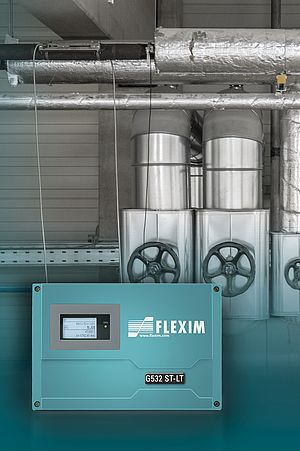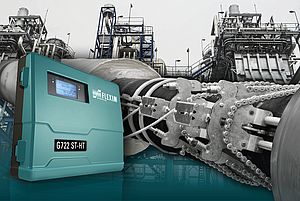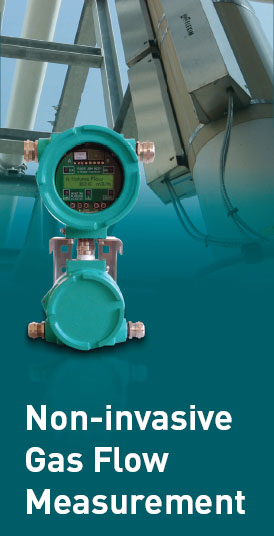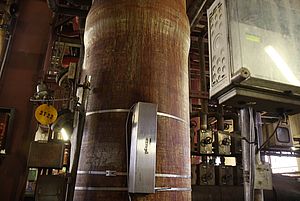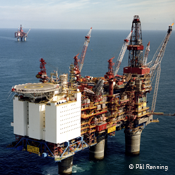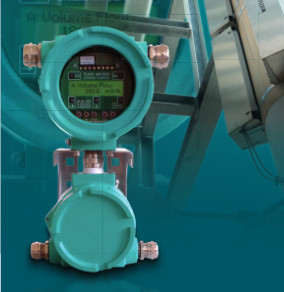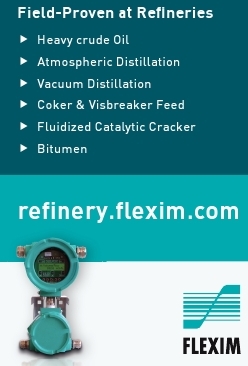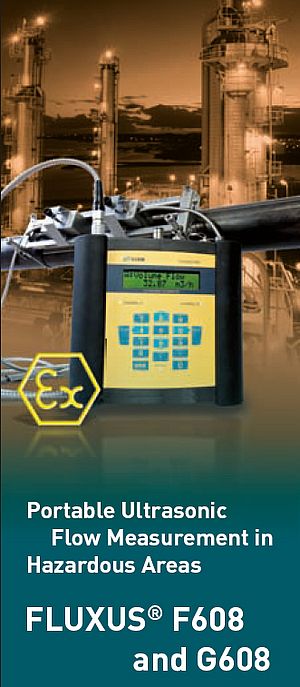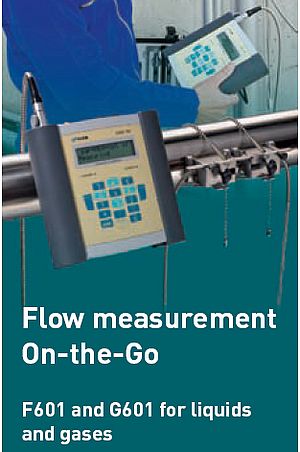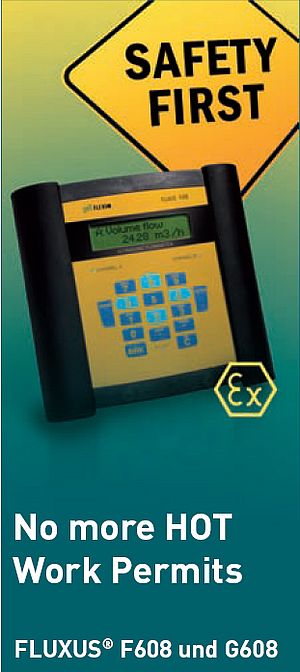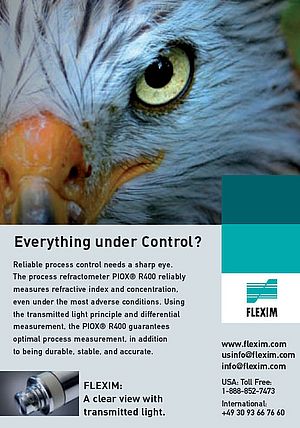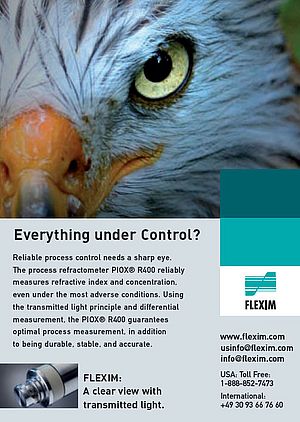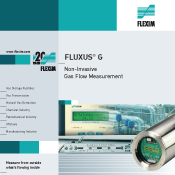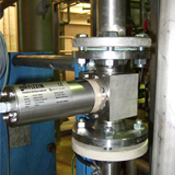The many processes running in a refinery form a highly complex system of material and energy flows which can only be managed by means of a dense network of measuring points continuously recording all relevant parameters. In days of rising costs for energy and resources, measurement and control technology is more than simply ensuring that a plant fulfils its function: a constant optimisation of the plant’s processes is required. Global competition makes it increasingly important to recognise and utilise all potential for minimizing the required energy and maximizing the yield. In the field of crude oil distillation, an important indicator for an efficient column operation is the overflash volume. The properties of the medium – a heavy and highly viscous gasoil – and the process conditions (low flow velocity and high temperatures around 380°C) make it very difficult to measure this quantity. The BP Oil Refinery Emsland processes approx. 4.4 million tonnes of crude oil annually. Most of it is comes from the north-west oil pipeline, which also supplies refineries in the Ruhr and the Rhineland with imported oil unloaded from oil tanker ships at the harbour of Wilhelmshaven. But not all crude oil is equal. Its composition, and thus the percentages of light and heavy hydrocarbons it contains, varies depending on its origin. The process control has to respond flexibly to these differences in order to achieve the highest possible yield of desired products. Usually, refinery plants almost exclusively use orifice flow meters because of the high temperatures. In Lingen, the overflash volume is conveyed in a 6” pipe located on the outside of the column. There, the overflash flows one column section downwards, driven only by gravity. Measurements using the differential pressure method are made particularly difficult by the low volume flow of 10t/h at the most. In the small overflash return line, this means the flow velocity is never higher than 0.15m/s. For orifice flowmeters, this means that an orifice plate with a very small diameter has to be used to obtain satisfactory precision. This accordingly results in a high pressure loss which cannot be compensated with the available hydrostatic height. After a test measurement had demonstrated the suitability of non-invasive ultrasonic technology for this application, a FLUXUS meter with WaveInjector mounting fixture was installed at the measuring point. The meter uses the transit time difference principle to measure the volume flow. Since the physical conditions at the measuring point are virtually constant, it is easy to calculate the mass flow without recording the pressure and temperature. The recorded measuring values are fed into the process control system and are used for automatic control tasks. The clamp-on WaveInjector extends the possible application range of non-invasive ultrasonic measurements to temperatures up to 400°C. Its functional principle is simple: The patented system consists of two coupling plates, each connecting a transducer with the pipe, yet keeping both of them a certain distance apart. The surface of these plates radiates enough heat to keep the temperature at the mounting point of the transducers within the permissible range. Simultaneously, the coupling plates ensure the acoustical contact between pipe and transducer. The mechanically robust mounting fixture maintains a high contact pressure. Specially designed metal foils replace the coupling gel and insure contact and long-term stability. As the WaveInjector is a purely mechanical arrangement, it can also be used in explosive atmospheres, together with transducers that have been tested and certified for explosion protection. It is not necessary to cut into any pipes to install the transducers. They can also be retrofitted - without downtimes or complicated approval procedures. The other advantages of clamp-on measurement – such as not being dependent on pressure or media, no wear caused by the medium, high measuring dynamics – of course still apply. The oil refinery in Lingen, which started operation in 1953, was one of the industrial motors behind the economic development of the previously backward Emsland region. With around 600 employees and 75 apprentices, it is one of the most important employers in the region. However, compared to other national plants, and in particular to international ones, it is rather small. This makes it even more important for the people of the Emsland to optimally use the available capacity. Their success is visible in the figures: In 2007, BP Oil Refinery Emsland achieved a plant availability of 98%, the capacity utilisation amounted to 90%. Especially as far as plant availability is concerned, the ideal solution would be using non-invasive measuring methods. The measuring unit for determining the overflash volume was installed without interrupting the production process. The measuring point is located in a potentially explosive atmosphere. Therefore the explosion-protected FLUXUS ADM 8027 is used as transmitter. In addition to unlimited availability of the system components and full utilisation of their capacity, the optimisation of systems and processes is becoming increasingly important. In Lingen, a software for advanced control has been implemented for this purpose. It varies the process parameters based on mathematical models and the data from the process control system, and optimises the process using iterative learning control. An important measuring value for this purpose is provided by the high-temperature ultrasonic measurement at the overflash return line. As reliable data is now available on the quantities that return as a function of the various types of crude oil and of the way the column is being run, thae process can be optimised to achieve more energy efficiency and yield.
Ultrasonic Measurement of Overflash Mass Flow
In the BP Oil Refinery Emsland in Lingen, Germany, a clamp-on ultrasonic measuring system measures non-invasively the heavy gasoil slowly flowing back during crude oil distillation.
- by FLEXIM GmbH
- November 1, 2009
- 1121 views






